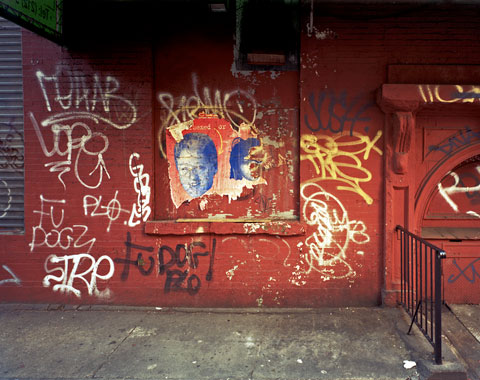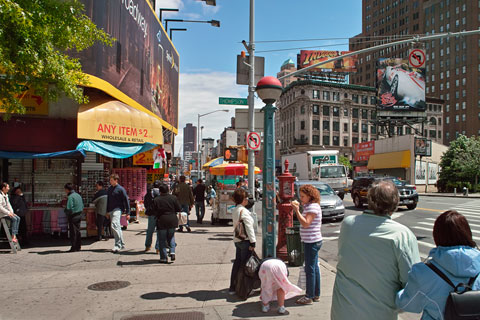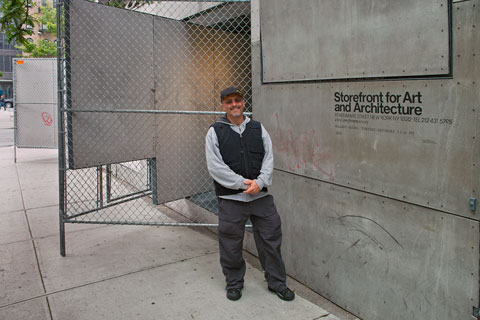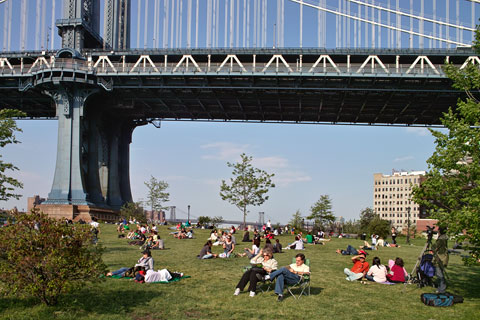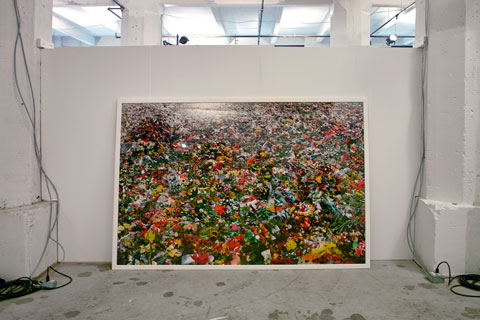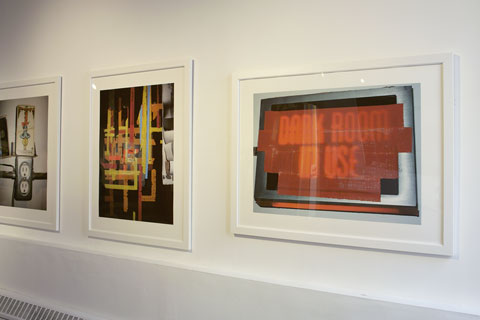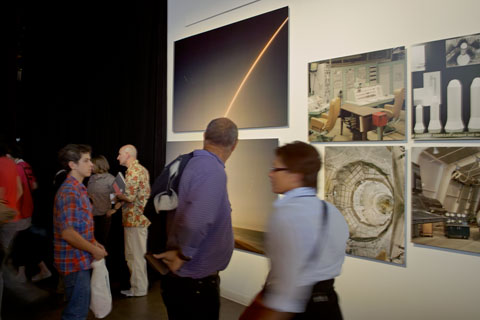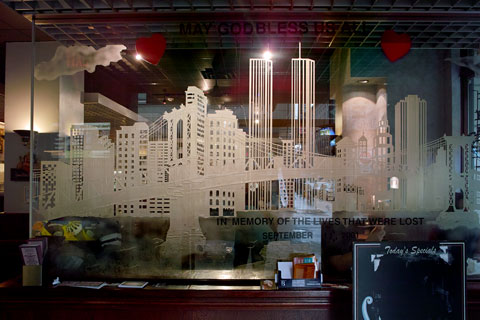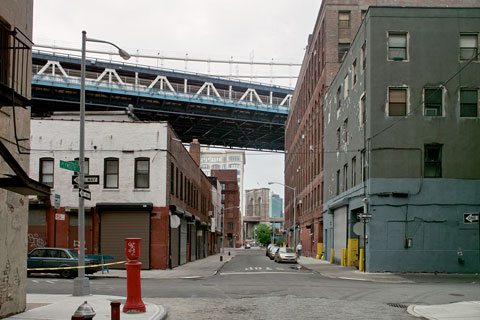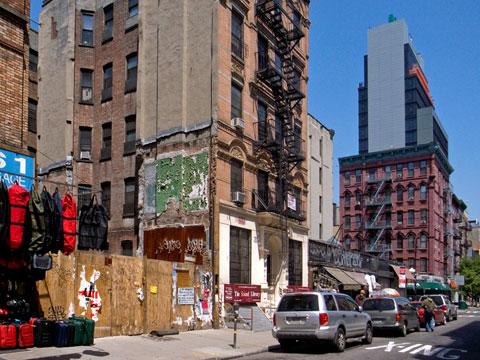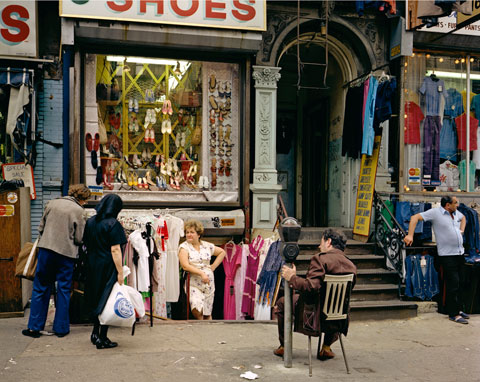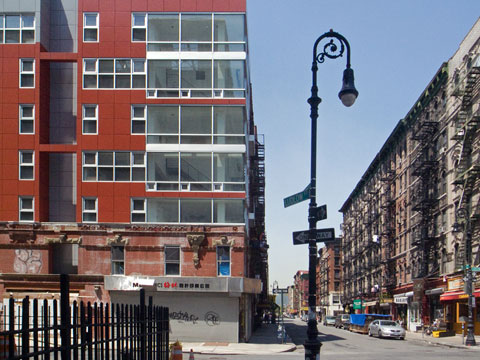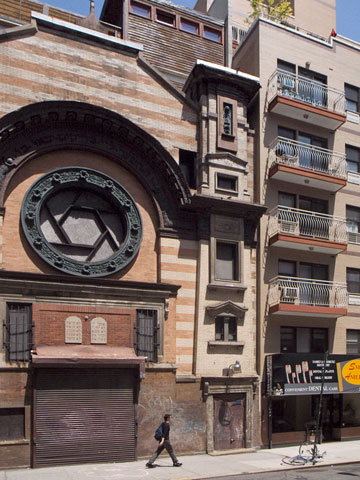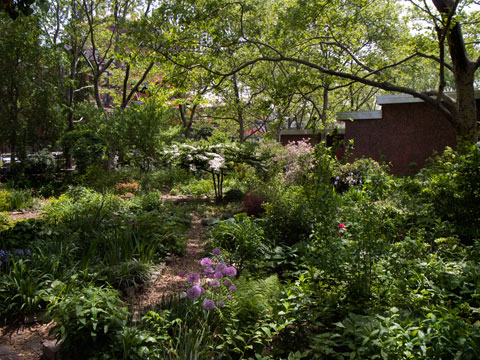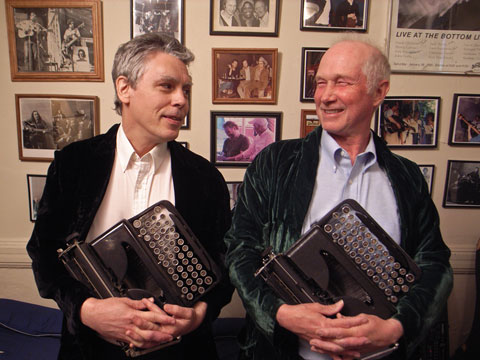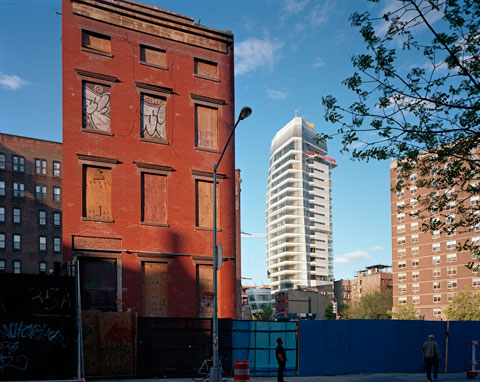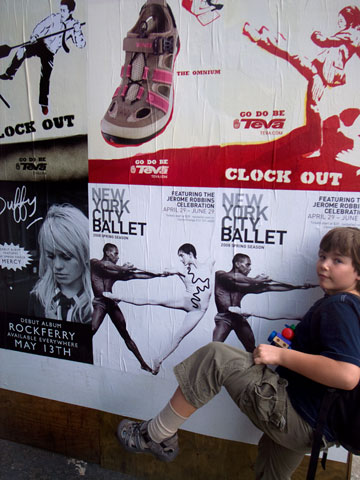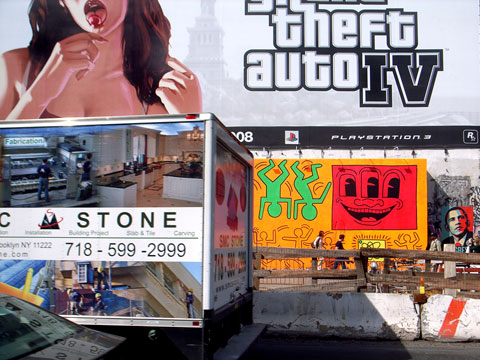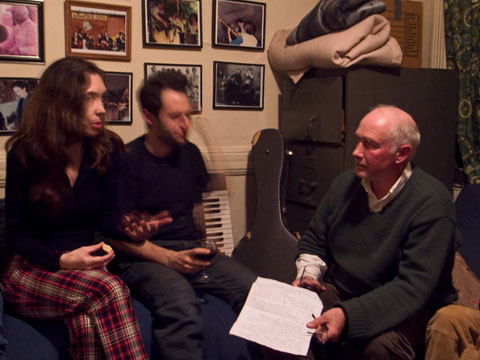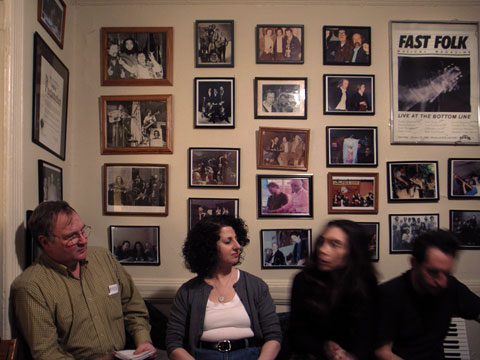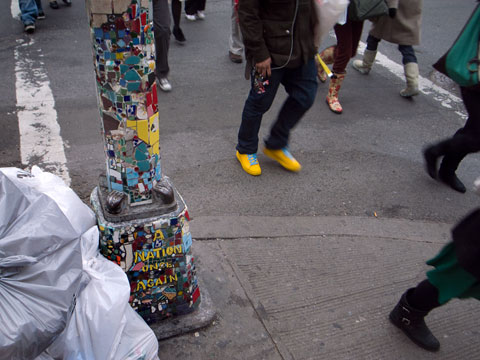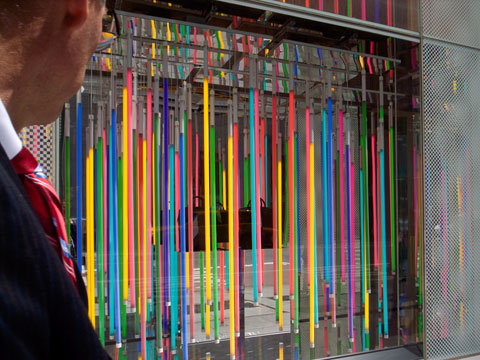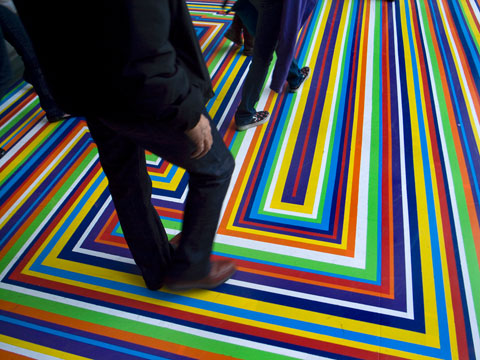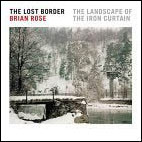New York/WTC
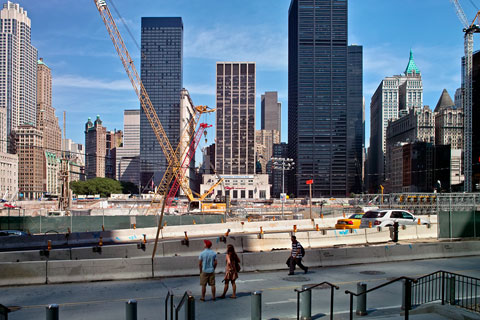
Ground Zero/WTC (digital)
Made another walk with my view camera down to Ground Zero/WTC. Construction continues mostly below ground focused especially on the transportation infrastructure. WTC 7 is the only finished building that replaces anything lost on 9/11, but eventually new towers will rise from what is still a giant hole in the ground.
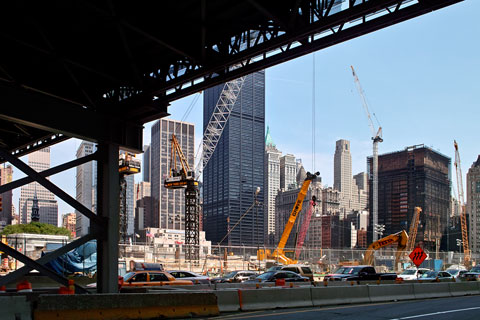
Pedestrian bridge over the West Side Highway (digital)
There is still no good place for tourists and visitors to advantageously view the entire WTC site. As a result, people wander about picking their way through a maze of fences and barriers. The ill-fated Deutsche Bank building remains shrouded in netting, but is slowly coming down.
Note: Thanks to Blogger being down again for uploading to ftp blog sites, I accidentally overwrote my last post. I'll try to re-up those photos later. Blogger's poor performance has greatly tarnished my previously high esteem for Google, the company that offers the service.
